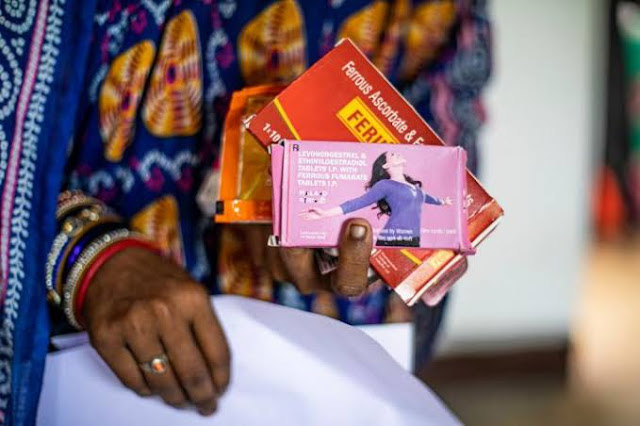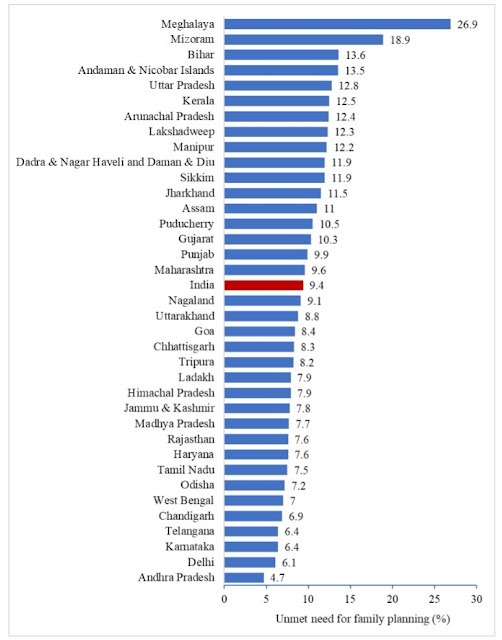The international community has been celebrating World Contraception Day on September 26 every year for the past 15 years. On this day, a number of regional and international healthcare organizations get together to promote contraception among the general public. The theme for World Contraception Day 2023 is “The Power of Options,” emphasizing the critical role that contraceptive options play in empowering people to take charge of reproductive and sexual health.
The same is reflected in the 2030 Agenda for Sustainable Development Goals under target 3.7: by 2030, ensure universal access to sexual and reproductive health-care services, family planning information and education, and the integration of reproductive health into national strategies and programmes.
Conventionally, the role of contraception is attributed to only ensuring the rights of adults to decide freely and responsibly on the number and spacing of their children. The World Health Organization (WHO) emphasizes three roles of family planning: assistance in timing, spacing, and limiting of births.
The denotation is that family planning helps the couple or partners to plan a birth at the right time when they are ready, assists them in planning adequate space between marriage and the first birth and between two births, and supports limiting the desired number of children.
Along with the WHO, several individual researchers have further stressed the role of family planning in the prevention of reproductive tract infections (RTIs) and sexually transmitted diseases (STDs). However, with reduced birth rates, global and local public and private donor spending on contraception research and development, supplies, and related health care is shrinking significantly.
Unmet need for family planning
Despite India reaching replacement-level birth rates (i.e., on an average of two children per woman), the ‘unmet need for family planning’ (defined as fecund and sexually active women who don’t want any more children or want to delay the next child but do not have access to contraception) is still high in women.
Population scientists report that a substantial share of the decline in birth rates is attributable to a rise in age at marriage and access to abortions. The latest National Family Health Survey (2019–21) suggests a considerable state-wise variation in the unmet need for family planning.
Figure 1 shows the highest and lowest unmet needs noted in Meghalaya (27%) and Andhra Pradesh (4.7%), respectively. In the larger states, such as Bihar and Uttar Pradesh, the unmet need for family planning is very high. It indicates that a large number of populations in these states want to use family planning but don’t have access to it.
Unfinished agenda for family planning
The agenda for family planning is not yet finished. Specifically, the agenda of family planning does not end with the decline in birth rates and reaching the replacement level of fertility. The agenda was to enhance access to and use of contraceptives with a rights-based approach and expand choices and safety.
Gender equity in contraceptive choices and use is a critical concern where contraceptive use and its side-effect burden is disproportionately borne by women. Except for male condoms, men’s role in other types of contraceptive use has reduced significantly. Male sterilization has been disappearing in India. Further, the research and development in the manufacturing of contraception is heavily skewed toward female contraception rather than male contraception.
Figure 1: Unmet need for family planning among the women aged 15–49 years across the states and Union territories in India, National Family Health Survey, 2019–21:
The new agenda: Family planning for happiness and prosperity
The new agenda for family planning relies on its role in promoting happiness and prosperity, besides population stabilization and enhancing women’s and human rights. With increasing access to education, postponement of marriages, and an increase in life expectancy, there are new emerging concerns that include contraceptive knowledge, supplies and coverage for unconventional target groups such as adolescents and older adults.
India also has one of the highest adolescent pregnancies in married populations, while we don’t have much evidence on contraception use, pregnancies and abortions in unmarried populations and older adults owing to a lack of data collection rather than their nonexistence.
However, the emergency contraceptive and abortion pill sales data give some hint that there is a considerable hidden burden in India as well. Access to contraception knowledge and coverage for older adults to ensure their sexual rights is also not on the mainstream policy agenda. With increasing life spans in the populations, sexual health and the concerns and rights of older adults also assume importance.
Concluding remarks
Unintended births have a greater chance of being undernourished, receiving less care and education, and having a higher chance of mortality. Couples with unintended births, sexual and reproductive tract infections, or contraceptive-led side effects have a greater chance of having work-family conflicts, intimate partner violence, and lower socio-economic status.
Unmarried partners with accidental pregnancies and sexual tract infections have a lower chance of acquiring greater human capital, skills, and successful labor markets and also have a greater chance of suffering from mental health issues.
Promotion of contraception choices, knowledge, use, and safety for all eligible and desired individuals is critical for expanding happiness, well-being, and prosperity in the country through quality human capital creation, greater labor market participations and avoiding undesired public spending.
It does not only ensure population stabilization but also prevents mistimed pregnancies, education and job market drop-outs, and reduces health risks. It helps build gender and social equity by reducing unwanted motherhood penalties for women, especially those from deprived social groups.
In particular, promoting healthy communication between partners and eliminating stigma around family planning to improve reproductive and sexual health outcomes have demonstrated an impact on making equitable and joint decisions to reach fertility intentions, sexual, emotional and mental health and achieve desired socio-economic outcomes for individuals, families, and society.
Finally, public spending on research for developing gender-sensitive contraceptive method choices to involve more men, increase supply and services, and provide information is essential to achieving family planning-led happiness and prosperity for the country.
*Srinivas Goli is associate professor, International Institute for Population Sciences (IIPS), Mumbai, India. Md Juel Rana is Assistant Professor, Govind Ballabh Pant Social Science Institute, Prayagraj. Declaimer: Opinions expressed are solely the authors’ personal views and do not reflect the opinions and beliefs of the affiliated organizations.
Courtesy: CounterView


